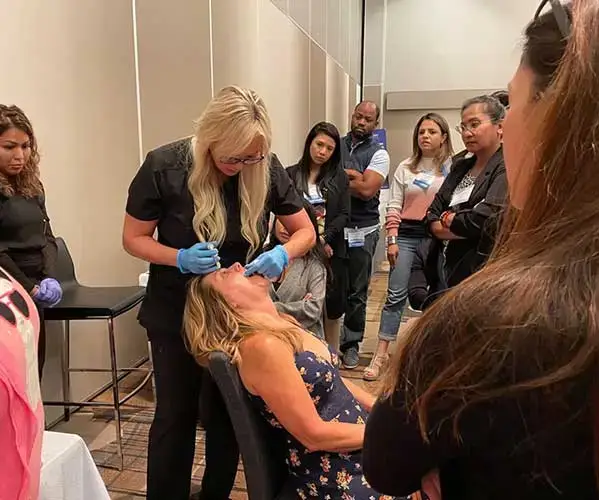Bunny Nasalis Lines: What They Are and How to Treat Them
By Dr. Stephen Cosentino
PRESIDENT OF EMPIRE MEDICAL TRAINING
When you scrunch up your nose — whether intentionally to express displeasure or unintentionally in response to an unpleasant odor or alarming comment — you expect the movement to be temporary. Or, at least, its effects.
That’s not the case for people with noticeable nasalis lines, more commonly known as “bunny lines.” These lines appear on the bridge of the nose and can become more pronounced with age. They may mistakenly give those around you the impression that you’re in a bad mood (or just don’t like them much).
What Are Bunny Nasalis Lines?
The good news is that bunny lines can be treated. First, let’s review what they are, where you’ll find them, and what to expect from them over time.
What Causes Bunny Nasalis Lines?
Bunny lines are caused by contractions in the nasalis muscle. They’re made worse by age-related factors, including plasticity loss in the muscle itself and volume and elasticity loss in the skin above it. The cumulative effect is a set of fine lines and wrinkles that are especially noticeable with certain everyday facial expressions (frowning, wrinkling the nose).
Where Do Bunny Nasalis Lines Occur?
Bunny lines appear high on the sides of the nose, beginning at the inner corners of the eye and extending up toward the bridge. Moderate to severe bunny lines may meet at the peak of the nose bridge, creating a permanently worried or angry appearance.
Do Bunny Nasalis Lines Get Worse Over Time?
Like other common age-related “expression lines,” such as frown lines and crow’s feet, bunny lines do deepen and grow over time. Many people develop these lines in their 20s or 30s but don’t think much of them until they’re in their 40s or 50s, when they’re much more pronounced. Treatment is still possible at this point, fortunately.
How to Treat Bunny Nasalis Lines
Two common anti-aging treatments can temporarily reduce bunny lines: neuromodulators derived from botulinum toxin (such as Botox®) and volume-enhancing dermal fillers. In some cases, both may be indicated.
Neuromodulators (Botox and Competitors)
Botox®, Dysport®, Xeomin®, and other botulinum toxin-derived neuromodulators work by temporarily paralyzing specific facial muscles. This quiets the contractions responsible for persistent facial lines, including bunny lines.
To treat nasalis lines, Botox is injected into the nasalis muscle along the sides of the nose bridge. This is a small, shallow muscle, so dosing is low and the injection angle is superficial.
The injector must take care not to inject too far down the sides of the nose and affect an unrelated muscle. An improperly placed Botox injection here can cause temporary asymmetric smile, one of the few potential side effects of Botox treatment for bunny lines.
Dermal Fillers
Botox and similar neuromodulators are often sufficient to treat bunny lines, but their results only last a few months. For more durable though still temporary results, some patients choose to pair Botox with hyaluronic acid fillers, which safely add natural-looking volume to the treated areas.
Dermal filler injections for bunny lines are also low-dose, superficial procedures. There’s not a lot of skin to volumize in this area. And again, due to the risk of side effects, it’s imperative to work with a provider who has completed advanced botulinum toxin and filler training through an accredited continuing medical education provider.


